In the early 1980’s this particular brand of 27MHz CB Base station antenna was extremely popular – particularly in the Newcastle area, they were everywhere. One of these antennas has recently been cleaned up suffering the usual oxidisation and corrosion over the thirty year period. This particular brand of antenna has interesting design aspects. In comparison to the South Pacific Radio SPR-27, the vertical radiating section was more complex. Even so, back in the day you could buy a Stationmaster MK1 antenna for $69, an absolute bargain.
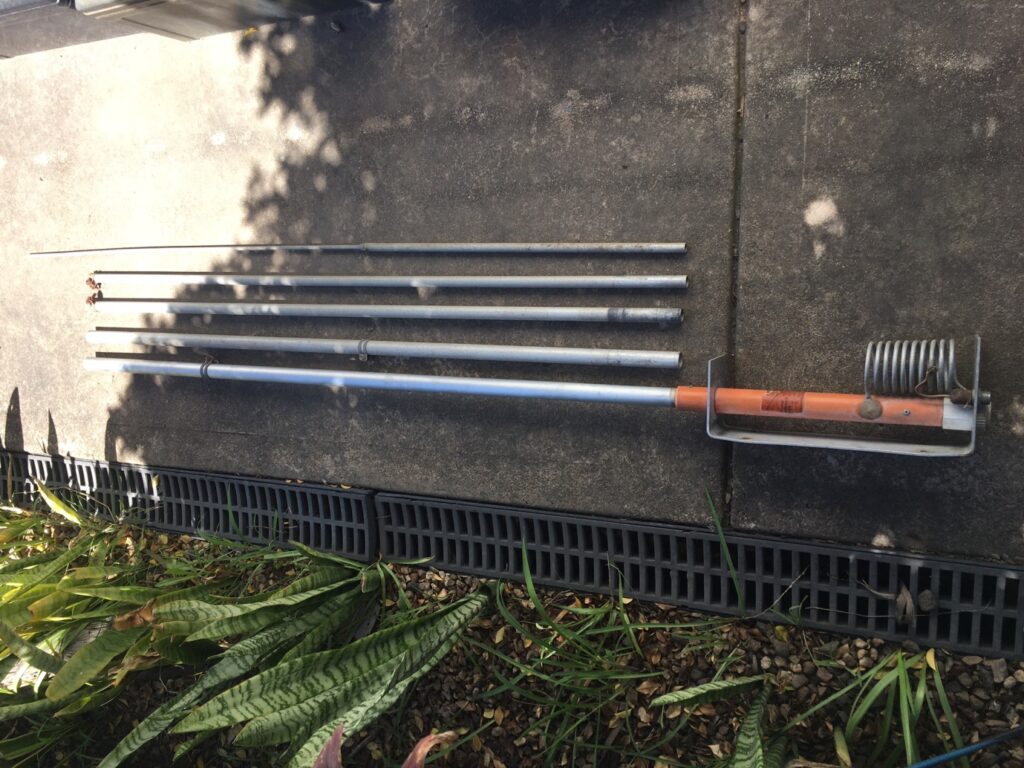
The vertical sections show the usual oxidisation and corrosion expected after thirty years of service. 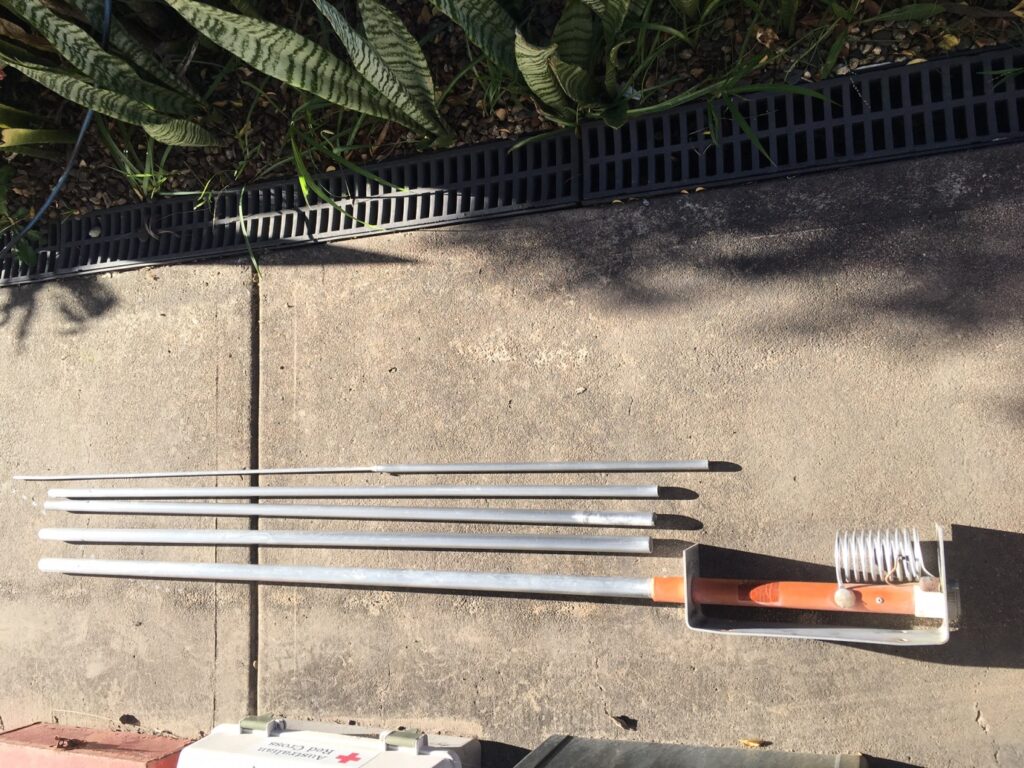
Some 600 grade wet and dry paper and a bucket of water can do. These components are looking a whole lot better. 
The weathered label is a picture of the antenna and written at the bottom “Communications throughout Australia”.
The construction of the bottom part of the antenna is similar among the three rival products in that 3mm aluminium flat bar is bent into shape to form the mounting bracket. The bottom insulating assembly consists of a 25mm Clipsal conduit fitting and conduit section, components normally used by electrical trades for wiring runs. The transformer coil is smaller than that on the SPR-27 – both in size and the diameter of the aluminium tube used. The manufacturing method chosen to form the coil would also be interesting to see as it is hard to bend aluminium tube into a curve without kinking it.
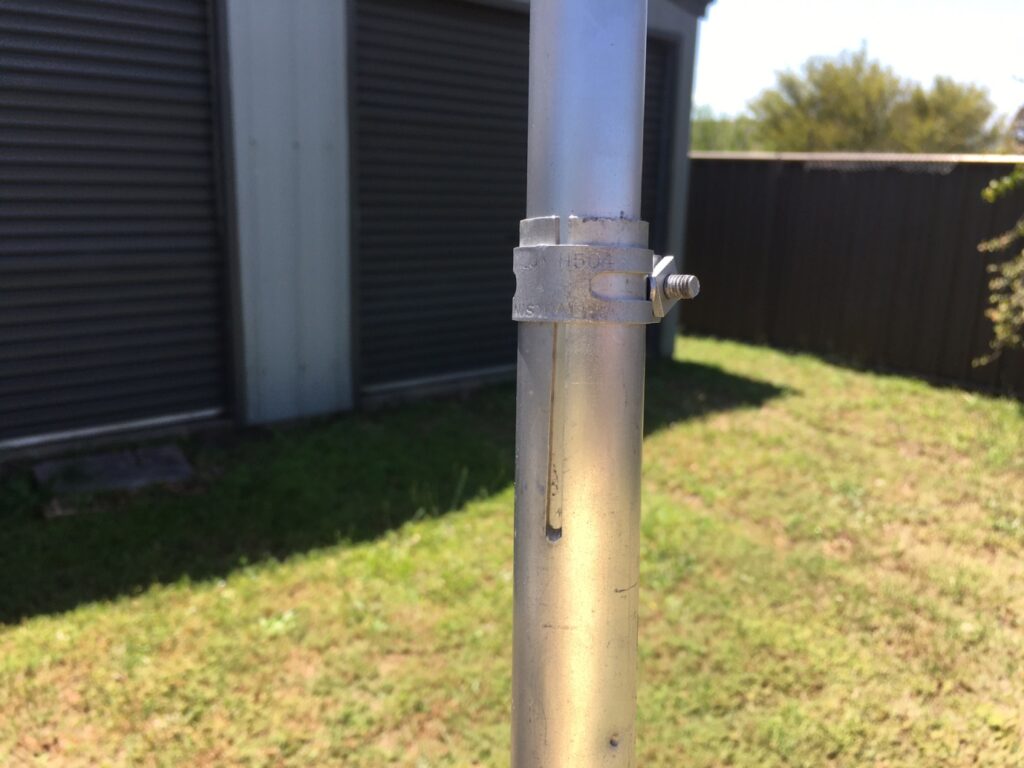
The first adjoining section showing the 55mm saw cut, the Utilux H504 hose clamp and one of the dimples at the bottom of the photograph.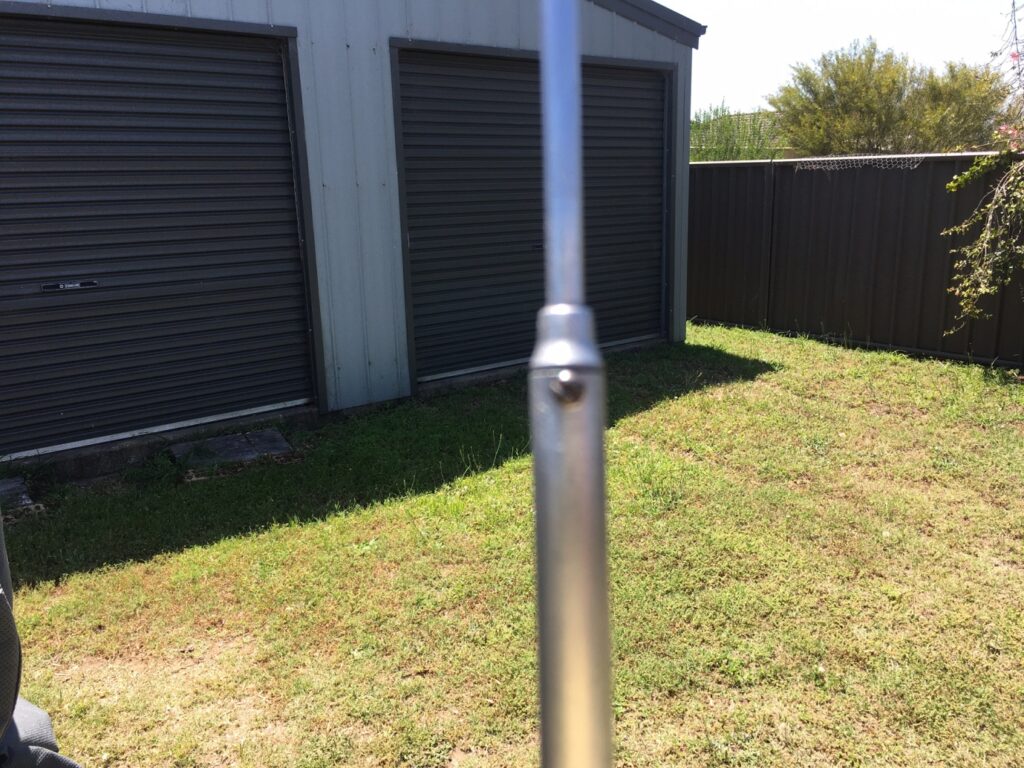
The top stinger section is adjustable for best VSWR. 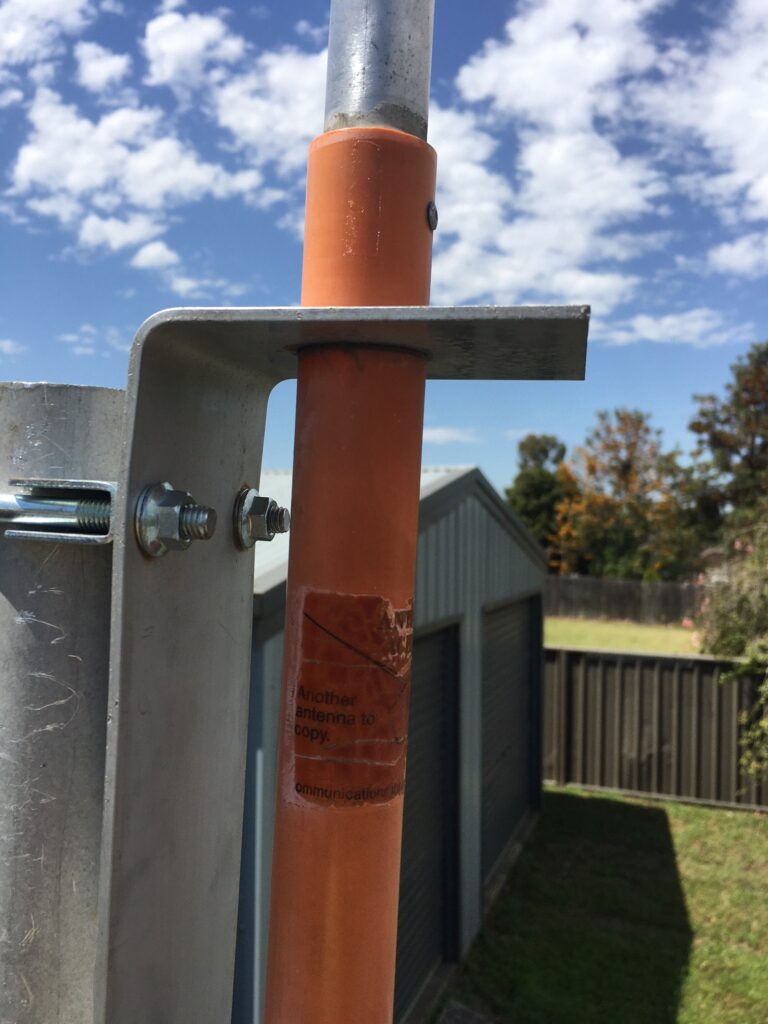
All three rival products have their own claim to fame. In the case of the Stationmaster MK1, it is “Another antenna to copy”. 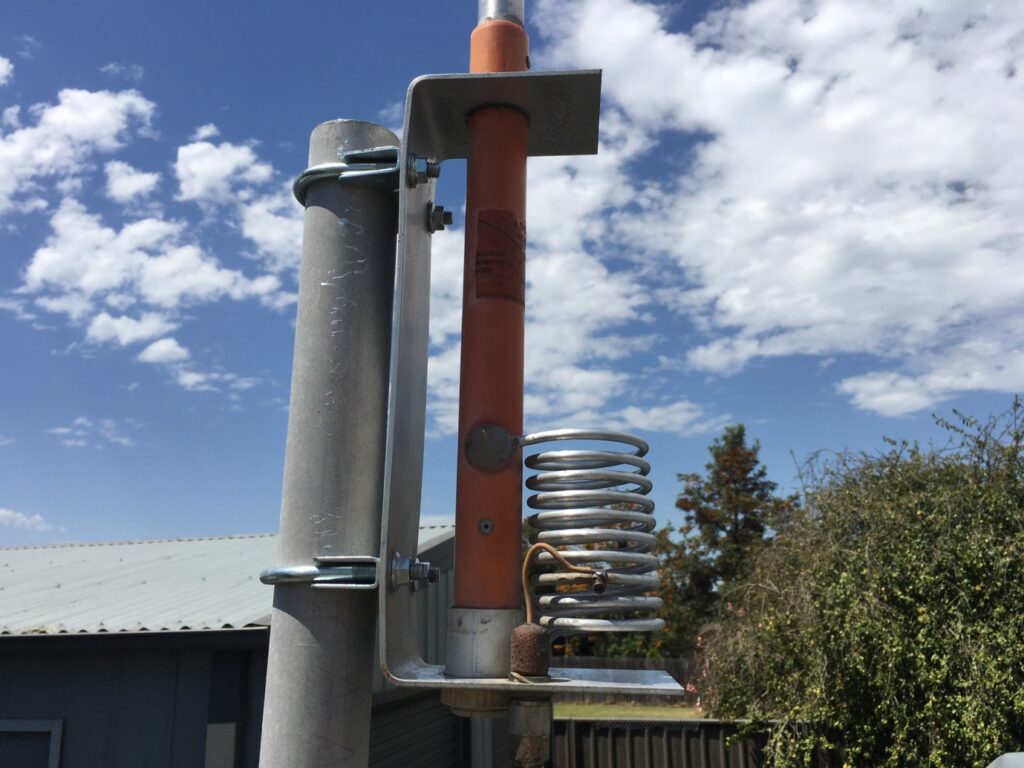
For this particular antenna, the length of the vertical radiator and tapping point needed to be adjusted for best VSWR. 
The Stationmaster MK1 in all its glory
The method used to assemble the vertical radiating sections differs to that of the SPR-27 which uses self tapping screws – rather simple and foolproof for the end user.
The vertical sections of the Stationmaster MK1 have a longitudinal cut at the top made by a rotary saw, around 45-55mm long depending upon the section. To prevent the vertical sections above from falling any lower, two deep dimples have been pressed into the tube one hundred and eighty degrees apart. The size and depth of these dimples is beyond what you could achieve with a hammer and a centre punch. A hydraulic press and a suitable tool were used for this.
Of interest is the method of clamping the sections together which for this particular antenna was the good old Australian made Utilux hose clamp. Four different sizes were used, being the H504, H500, H498 and H496. Utilux hose clamps were an early type of T-bolt clamp used by the automotive industry. The H504 in particular was a heater hose clamp used on Holden Kingswood, Ford Falcon and Chrysler Valiant. There is the very odd one of these still available today as new obsolete stock but be sitting down before you see the asking price – typically $35 each per clamp. Back in the day they were one tenth of this price. The smaller sizes are obsolete so for those looking for replacements to refurbish such an antenna try those from AMG Distributors. Specifically, a 22-32mm HO31, 15-24mm HO40A, 13-20mm HO39 and 11-17mm HO38 will suffice and of the same style originally used on these antennas. The worm drive type hose clamps will not be a suitable substitute for this application as they cannot be done up tightly enough.
The aluminium tube used for this antenna is of imperial size with the following outside Diameters: – 1”, 7/8”, ¾”, 5/8”, ½” and finally a ¼” stinger section. An adaptor sleeve near the top allows the ¼” stinger to slide inside the ½” outside diameter (and 3/8” inside diameter) tube, held in place with a self tapping screw. This allows the end user to tune the antenna for best VSWR in addition to adjusting the tapping point on the transformer coil.
As can be seen above, after a clean up and reassembly, this antenna still gives an excellent VSWR without any adjustment. We haven’t tested it on air yet but I think we can be confident that it will perform just as well as it did 40 years ago!
Andrew Pain
31 October 2021
